Contemporary minimalism art is an aesthetic movement marked by simplicity and a deliberate lack of decoration.
We recognize it by the use of simple forms, clean lines, and limited color palettes. This style emerged in the late 20th century as a response to the complexities and excesses perceived in life and art.
Minimalist artists aim to strip their works to the essentials, providing a visual experience that can be both stark and profound. We see this as a reflection of the artists’ search for purity in expression, by focusing on the idea that less can indeed be more.
We observe the principles of minimalism across various mediums, including painting, sculpture, and installation art. Artists like Donald Judd, Agnes Martin, and Robert Ryman pioneered this movement, challenging traditional notions of art with their emphasis on form, material, and space over subjective expression.
In this realm, the relationship between the artwork, the space it occupies, and the viewer becomes paramount. The minimalist aesthetic influences not just visual art but also design, architecture, and lifestyle, reinforcing the idea that simplicity can lead to a clearer understanding and appreciation of an object or space.
Our engagement with contemporary minimalist art involves an interactive process where we’re invited to contemplate the artwork and its surrounding environment as a unified whole. The minimal use of elements in this style encourages us to appreciate the subtle nuances and the value of the space within and around the art. As we continue to explore this field, we encounter works that challenge the viewer to consider the essence of artistic expression and the impact of simplicity in our increasingly complex world.
Origins of Minimalism
Minimalism emerged as an art movement in the early 1960s, offering a stark contrast to the highly subjective and emotive style of Abstract Expressionism. Characterized by its simplicity and focus on pure, unadorned forms, minimalism sought to remove any trace of the artist’s hand and achieve an objective aesthetic.
1960s and Minimalism
During the 1960s, minimalism began to take shape as a coherent art movement. Artists utilized geometric forms and industrial materials, attempting to create works that stood independent of any external references, narratives, or emotional content. Key artists of the period, such as Donald Judd, Sol LeWitt, and Robert Morris, pushed for an art that emphasized the physical space it occupied and the viewer’s experience of that space.
- Key Characteristics in the 1960s:
- Use of simple, geometric shapes
- Emphasis on the materiality of the objects
- Repetition and seriality
- Elimination of pictorial depth
- Interplay with the surrounding environment
Abstract Expressionism Influence
Minimalism evolved partially as a reaction to the subjective intensity of Abstract Expressionism, the dominant art movement of the late 1940s and 1950s. Abstract Expressionism was marked by its focus on dynamic brushstrokes, large-scale canvases, and the impression of spontaneity. Minimalist artists distanced themselves from this emotional turmoil, instead focusing on order, purity, and systematic approaches to art-making.
- Shift From Abstract Expressionism:
- Movement from gestural abstraction to literal objects
- Rejection of emotional drama and personal mythologies
- Alignment with the idea of objectivity in art
Through our examination of the origins of minimalism, we come to understand its emergence as a distinct and influential movement within the artistic developments of the 20th century.
Defining Characteristics of Contemporary Minimalism Art
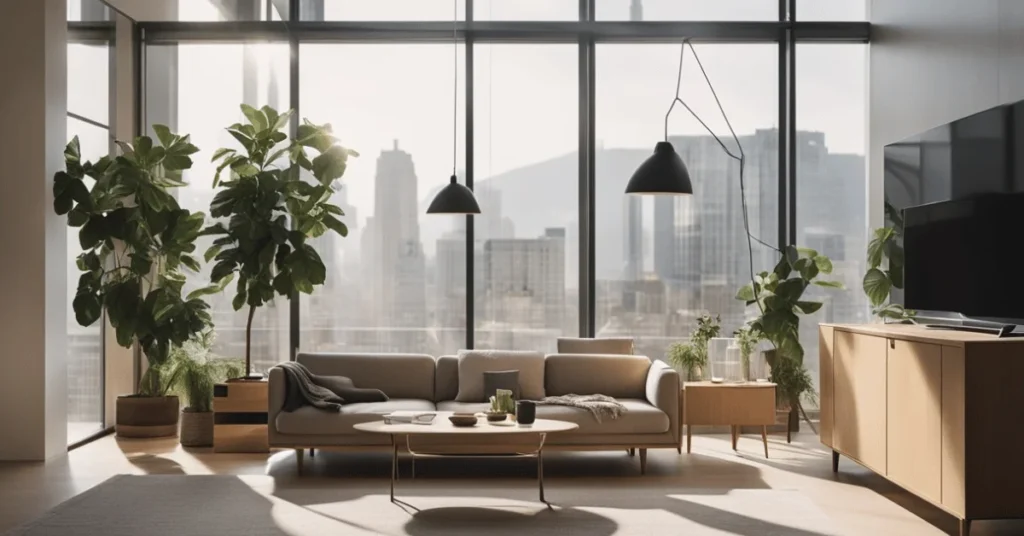
In contemporary minimalism art, we discern a commitment to clarity and precision, where each work embodies essential elements like form, space, and simplicity. We see an intentional avoidance of superfluous components and a focus on the intrinsic beauty of materials and shapes.
Geometric Forms
We encounter a strong preference for geometric shapes in minimalist art. Circles, squares, and rectangles are frequently employed to create visual impact. These geometric forms convey cleanliness and precision, underlining the movement’s emphasis on reductionist principles. For example:
- Shapes: Utilization of basic geometric shapes like the square and the circle.
- Lines: Straight, clean lines dominate to promote simplicity and order.
Simplicity and Order
We adhere to the principles of simplicity and order to effectively communicate the essence of an idea without distraction. Contemporary minimalism art strips down to the basics, underscoring the importance of:
- Simplicity: Removal of all non-essential or ornamental features.
- Order: Organized and strategic placement of elements to achieve balance and coherence.
Use of Space
We recognize the use of space in minimalist art as instrumental. Open spaces are not empty but full of potential, imparting a sense of calm and balance. The elements of design are arranged in such a way to accentuate the interaction with the surrounding space:
- Positive Space: The deliberate placement of objects in space.
- Negative Space: The open or empty area around and between the objects, which is just as important as the objects themselves.
Minimalism in Visual Art
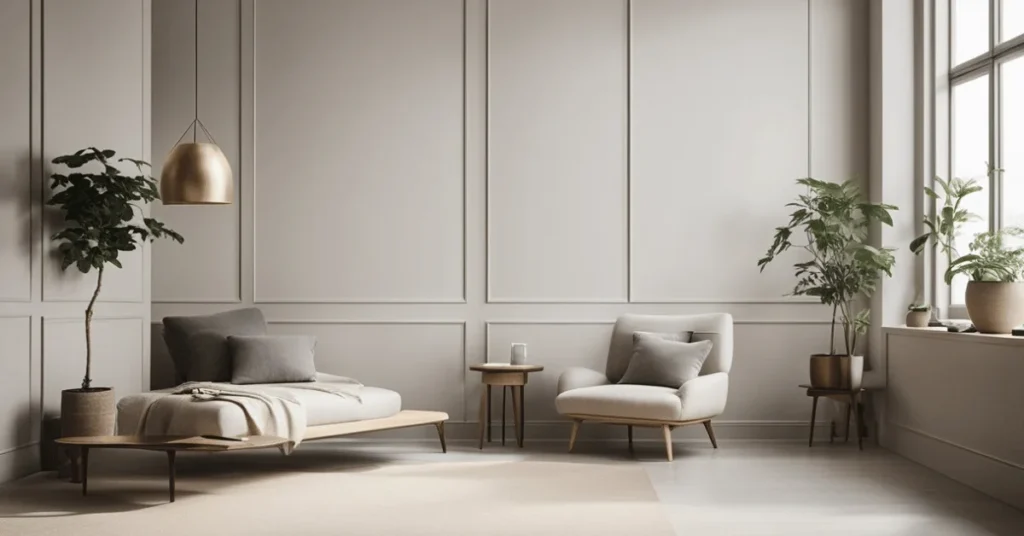
We observe that Minimalism in visual art emphasizes simplicity in form and content, where the work is stripped down to its most fundamental features.
Minimalist Painting
In our exploration of Minimalist painting, we find an emphasis on basic geometric shapes, monochromatic color palettes, and a lack of complex textures. The approach is methodical and focuses on the purity of the painting itself. Materials often consist of industrial or non-traditional substances.
- Notable Characteristics:
- Use of bold colors or complete absence of color
- Frequent presence of horizontal and vertical lines
- Simple, non-representational forms
Minimalist Sculpture
Minimalist sculpture frequently employs industrial materials such as steel, aluminum, or glass. These materials are chosen for their clean lines and the way they interact with light and space. Sculptures often consist of repeated geometric shapes that engage viewers in the physical presence of the work.
- Examples of Materials in Sculpture:
- Stainless Steel
- Plexiglass
- Aluminum
Photography and Print
The Minimalist approach extends to photography and print, where the imagery tends to be stark with a focus on the interplay between light, shadow, and form. Photographs in this genre are typically void of elaborate subject matter or cluttered compositions. The resulting prints allow viewers to concentrate on the essence of the subject.
- Key Elements:
- High contrast between subjects
- Simplified compositions
- Absence or minimization of textures
Notable Minimalist Artists of Contemporary Minimalism Art
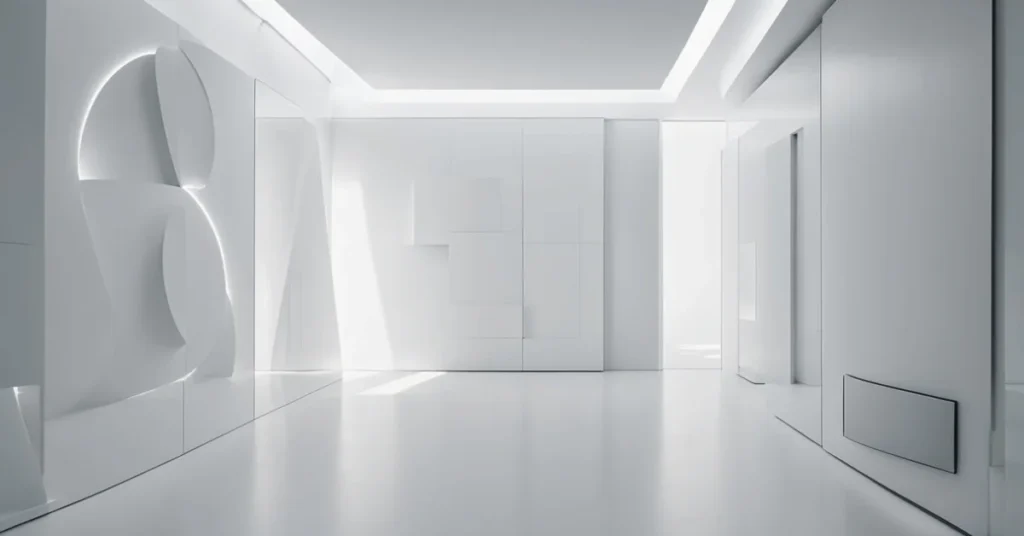
We recognize the significant figures in Minimalism, both foundational artists and those currently shaping the art form.
Innovators and Early Influencers
- Donald Judd: Known for his untitled works in specific objects, Judd’s geometric constructions and installations have been seminal in defining Minimalist art.
- Robert Morris: Morris’s felt pieces and corner pieces explore the relationship of the artwork with the space it occupies, which has been influential in Minimalist thought.
- Dan Flavin: Utilizing fluorescent lights, Flavin’s work blurs the line between the physical art object and the phenomenological experience of the viewer.
- Frank Stella: His shaped canvases and color field paintings illustrate Stella’s early role in moving away from complex expressionism to Minimalism.
- Sol LeWitt: A key figure in Conceptual art that overlaps with Minimalism, LeWitt’s wall drawings and structures are explorations of line and form.
- Carl Andre: Andre’s floor pieces often comprised of metal tiles or bricks show his dedication to the tactile qualities of ordinary materials.
- Agnes Martin: With her grid-pattern paintings, Martin focuses on the subtle interplay of hand-drawn lines and color, striving for perfection in form.
Contemporary Minimalist Artists
- Olafur Eliasson: He extends the Minimalist tradition by incorporating sensory experiences that engage the viewer in mindful observation of the environment.
Contemporary artists continue to draw from Minimalist principles, adding layers of personal and socio-political commentary, making the movement as relevant as ever.
Influence and Legacy
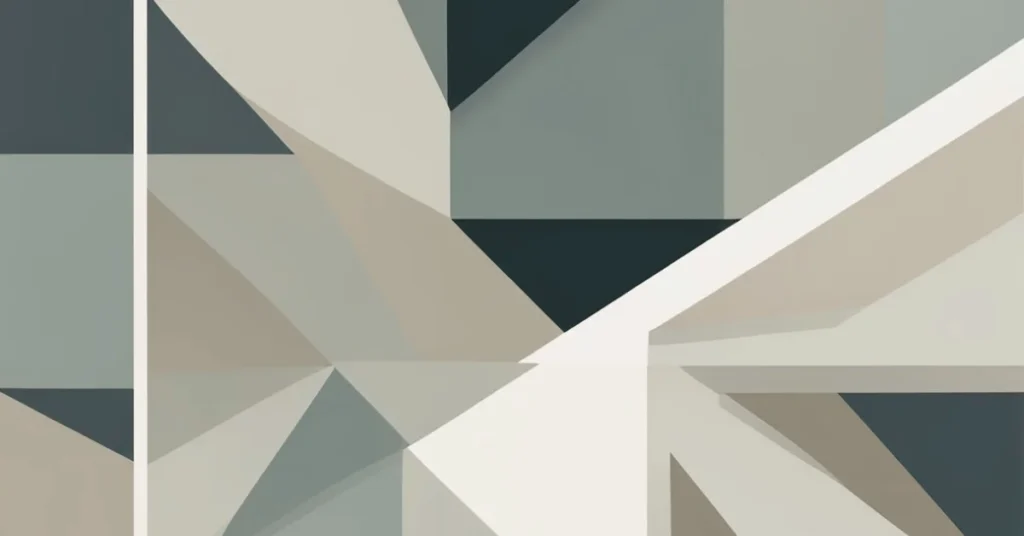
Minimalism has profoundly impacted various creative domains, reaffirming our belief that simplicity is often the pathway to innovation. We’ve witnessed its lasting impact on design and architecture, while also pushing the boundaries in conceptual art.
Impact on Design and Architecture
We observe minimalism’s influence in design and architecture through the emphasis on functionality and simplicity. Notable characteristics include open floor plans, monochromatic color schemes, and the use of industrial materials.
- Design:
- Emphasis on sophistication through simplicity
- Pioneering of clean lines and uncluttered spaces
- Architecture:
- Incorporation of natural light and seamless indoor-outdoor flow
- Focus on sustainable materials and energy efficiency
This stylistic philosophy has revolutionized interior design, often pairing down to the essentials to create serene, habitable spaces.
Minimalism and Conceptual Art
Our understanding of conceptual art has been significantly shaped by minimalist principles. Minimalism has challenged and expanded the boundaries of what art could be by focusing on the idea behind the work more than the finished product.
- Innovation in Art:
- Reduction of forms to basic geometric shapes
- Use of industrial materials to blur lines between art, design, and life
Conceptual artists have often drawn from minimalist concepts to engage viewers in a deeper discourse, triggering them to question the nature of art itself.
Minimalism in the Digital Era
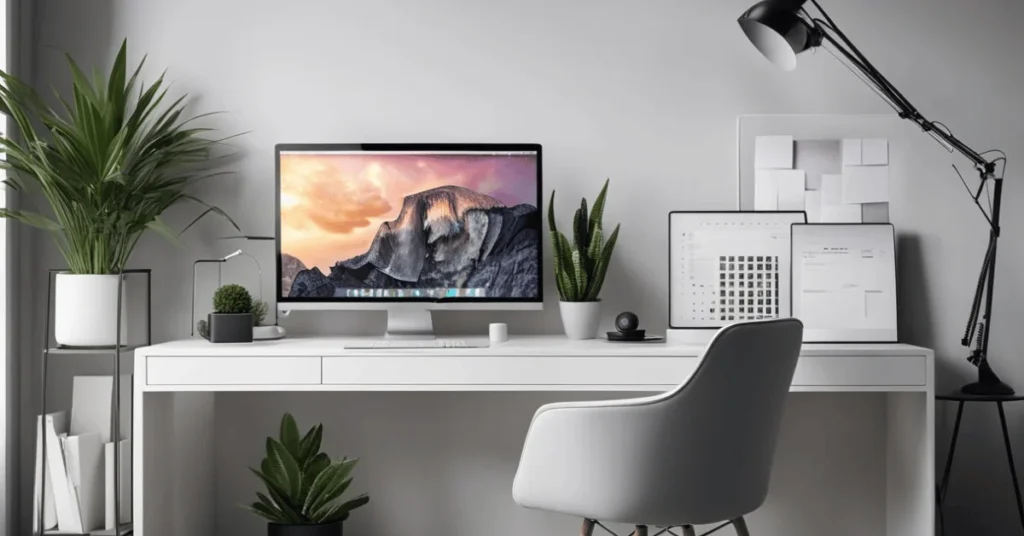
In this era, we observe the union of minimalism and digital technology steering aesthetics and functionality across various platforms.
Digital Art and Minimalism
The digital realm has embraced minimalism, a style based on pared-down design elements. We encounter minimalism in digital art through the use of simple shapes, monochromatic or limited color palettes, and ample negative space. The key lies in the art’s ability to convey a message or emotion with fewer components. For instance, consider a digital canvas with a single line or shape commanding attention through its isolation. We recognize representation through subtlety; a single dot might symbolize an individual in the vast expanse of digital space.
- Shape: Simplified geometry (circles, squares)
- Color: Limited palette, often monochromatic
- Texture: Often smooth and unembellished
Examples of such minimalist digital art are numerous, each piece unique in its execution yet unified by its adherence to minimalist principles. Artists may employ user-interactive elements, where simplicity in design heightens the user’s experience.
Functionality in Web Design
When we turn to web design, functionality emerges as both a driving force and benefit of minimalistic design. A clean, uncluttered interface facilitates user navigation and ensures that content is readily accessible—a principle we forgo at our peril. We strive for a balance where visual elements serve clear purposes without superfluous decoration.
Key Aspects of Minimalist Web Design:
- Navigation: Streamlined to improve user experience
- Imagery: Used sparingly and purposefully
- Typography: Clear, crisp fonts that embody minimalism’s clarity
Our goal in minimalist web design is to create websites that are both aesthetically pleasing and intuitively functional. With careful consideration of space, color, and typography, we achieve a user-friendly interface. The language used on such sites is typically direct and uncomplicated, assisting in the site’s overall approachability.
Aesthetics of Minimalism
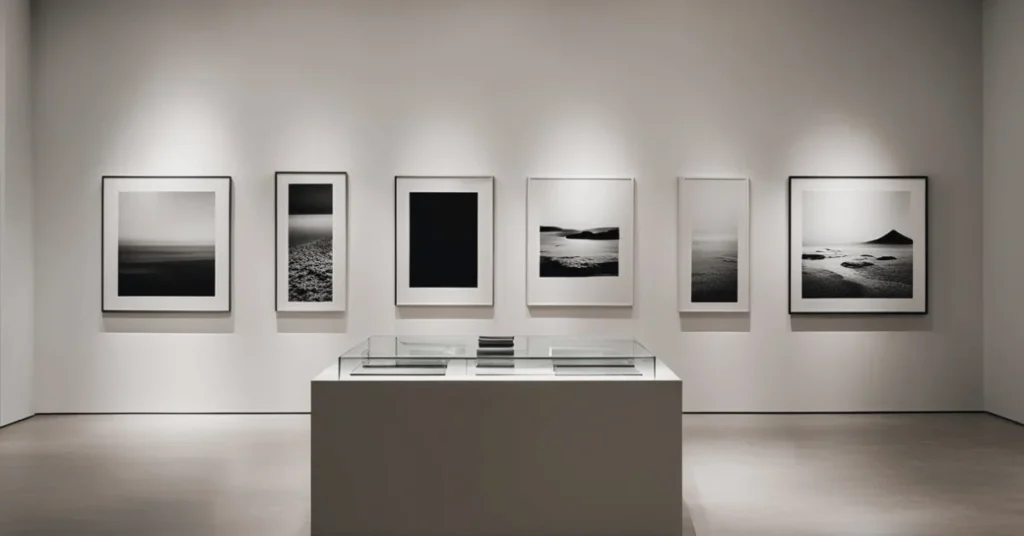
In contemporary minimalism art, we observe a focus on the fundamentals of beauty and light, creating an indirect and nuanced experience through the use of monochromatic color schemes and intentional lighting.
Beauty and Experience
We find beauty in minimalism through the purity of form and the absence of superfluous elements. This simplicity allows us to experience art without the distraction of complex narratives or ornate details. Key to this aesthetic is the emotional resonance that arises from sheer simplicity, crafting an environment for contemplation and internal reflection. Harmony is central, often achieved with muted colors and precise spatial relationships that evoke feelings of calm and an escape from visual noise.
Color and Light
We understand that color in contemporary minimalism art is often reduced to monochromatic palettes, where variation comes from subtle shifts in tone rather than a spectrum of different hues. This use of monochromatic colors sets a stage for the play of light, which becomes a dynamic element in the work.
- Monochromatic Colors: A tool to strip back the unnecessary and focus the viewer’s attention
- Fluorescent Light Tubes: Provide stark contrasts and create a dialogue with the surrounding space
With fluorescent light tubes, we introduce an industrial element that interacts with the monochromatic surfaces, generating an interplay of shadows and highlights that can alter the perception of shape and space. The application of color and light serves to embolden emotions and strengthen the minimalist aesthetic, providing a sense of clarity and focus.
Expression of Minimalism
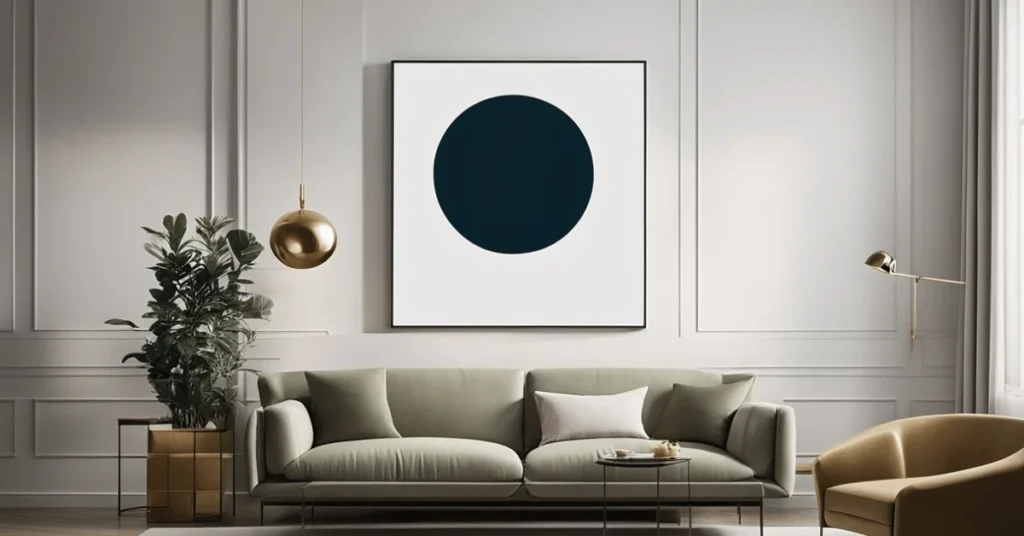
In exploring contemporary minimalism art, we concentrate on the modes of expression that define this movement. We examine how language and emotions are conveyed through minimalistic designs and how sensory interaction influences the reception of these artworks.
Language and Emotion
In Minimalism, the language is often embodied in rigid lines and repetition, stripping away the superfluous and focusing on the essential elements. We notice a deliberate restraint in emotion, allowing viewers to impart personal feelings onto the sparse canvas. Hard-edged silhouettes articulate a sense of order, inviting contemplation rather than overwhelming emotion.
- Rigid Lines: Symbolize clarity and precision.
- Repetition: Invokes a meditative or hypnotic sensation.
We appreciate the unique challenge that minimalism art presents in evoking emotion without the use of traditionally expressive techniques. Our emotions become reflections of the artwork’s sparse nature.
Sensory Interaction and Reception
Our sensory reaction to contemporary minimalism art is directly influenced by its sparse and hard-edged qualities. The visual impact is subtle but often profound—each piece may appear similar at first glance, but upon closer inspection, reveals a unique fingerprint.
- Visual Elements:
- Sparse design: Accentuates the importance of each element.
- Hard-edged: Evokes thoughts of precision and discipline.
Our reception of contemporary minimalism art is a personal journey. We experience a silent dialogue with the work, where the minimalist approach to form, space, and color makes us aware of our sensory perception. Minimalist art doesn’t assail the senses but rather invites them into a quiet space for exploration.
Materials and Techniques
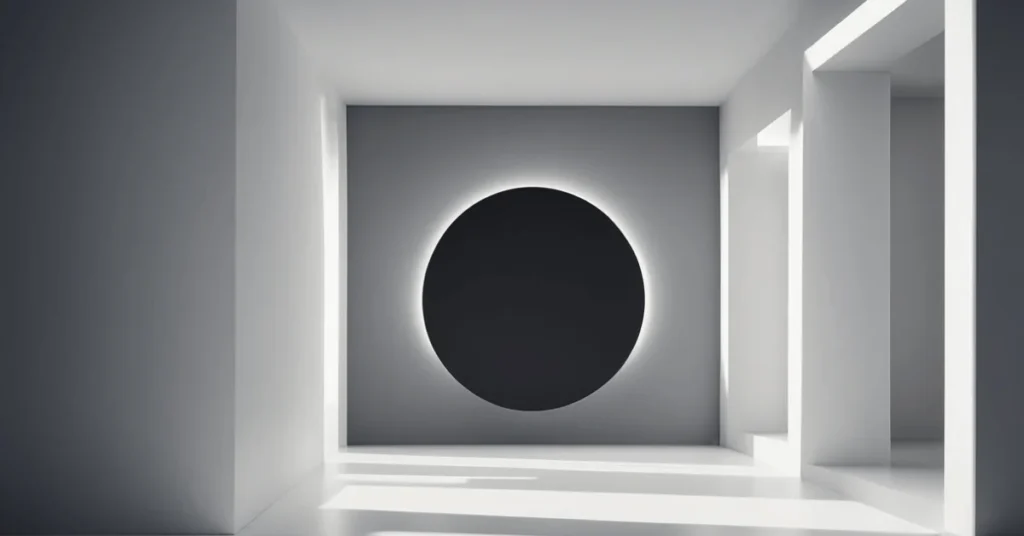
In contemporary minimalism art, we utilize a range of materials and techniques that emphasise simplicity and objectivity. Our approach involves both the adoption of industrial materials and the innovative application of traditional techniques.
Industrial and Commercial Materials
We often incorporate materials that are typically associated with industrial or commercial use. These materials are chosen for their ability to create specific textures and forms that adhere to minimalist aesthetics.
- Materials:
- Metals: Stainless steel, aluminum (favored for their reflective and smooth qualities)
- Plastics and Acrylics: Plexiglas, polycarbonate (selected for their transparency and versatility)
- Concrete: Used for its sturdiness and textural contrasts
- Textures: These materials often present a smooth finish, which is a hallmark of contemporary minimalism art, allowing geometric shapes and forms to stand out without unnecessary complexity.
- Commercial Materials: Everyday objects are sometimes repurposed, underscoring the minimalist philosophy of reductivism. Mass-produced items, for instance, can be stripped of their original context and presented in a new light.
Traditional Techniques and Innovation
Our use of traditional techniques is not rooted in nostalgia but rather in the pursuit of innovation within minimalism.
- Traditional Techniques Reimagined:
- Canvas Stretches: Simplified to foster an uninterrupted surface for minimalistic expression.
- Sculpting: Reduction to basic geometric shapes, moving away from intricate detailing to embrace minimalism’s core tenets.
- Innovation in Artistic Practice:
- Spatial Arrangements: Pieces are often displayed with considerable space around them, enhancing viewer perception of the work’s form and materiality.
- Light as a Material: The innovative use of lighting can alter the appearance and texture of materials, creating an interplay between light, shadow, and the inherent qualities of the artwork.
Our work in contemporary minimalism art is defined by a conscious selection of materials and an innovative twist on time-honored techniques to create artworks that speak of simplicity, form, and structure.
Themes and Concepts
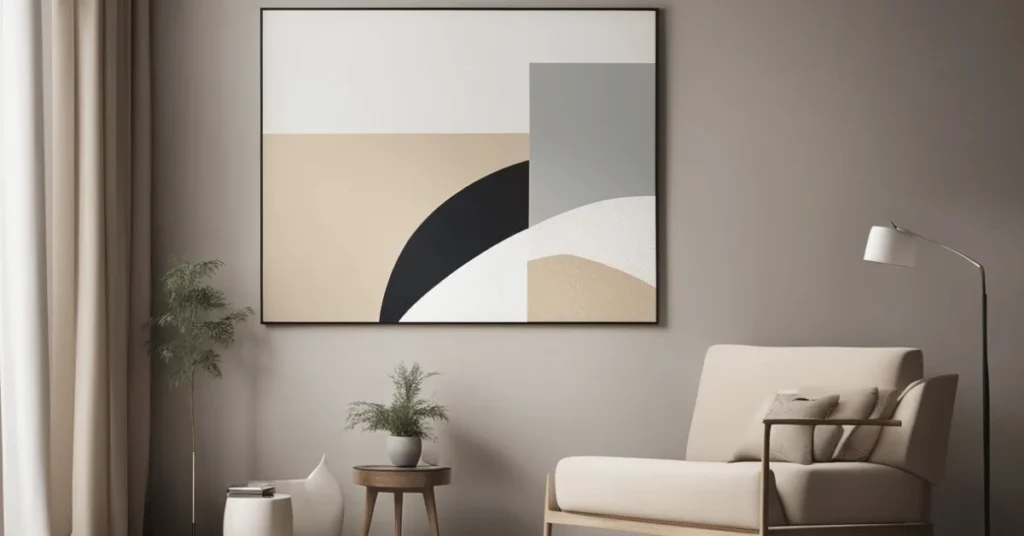
We can observe that within contemporary minimalism art, themes and concepts are often centered around a reductive approach to form and composition. Our interest lies in how this movement prioritizes abstract and non-representational forms, and a distinct appreciation for simplicity as an aesthetic choice.
Abstract and Non-representational Forms
Minimalistic art is characterized by its focus on abstract forms. These artworks strip away the extraneous to highlight the essential elements. In doing so, artists redefine the spatial relationships within the art itself and between the artwork and the viewer.
- Primary Structures: These are often geometric forms that serve as the building blocks of minimalistic art, providing a clear and original expression of simplicity.
- Details: While minimalism art is sparse in detail, each element is meticulously considered and executed to ensure a cohesive and impactful overall form.
Simplicity as an Aesthetic Choice
The concept of simplicity stands at the forefront of contemporary minimalism art as both an aesthetic and philosophical choice. We see this reflected in the understated elegance and clarity that imbues the art form.
- Aesthetic: The use of clean lines and uncluttered composition is a deliberate choice for creating a serene and contemplative visual experience.
- Choice: Simplicity is not the absence of complexity but is the result of a careful distillation of ideas to their most fundamental aspects.
Integrations and Influences
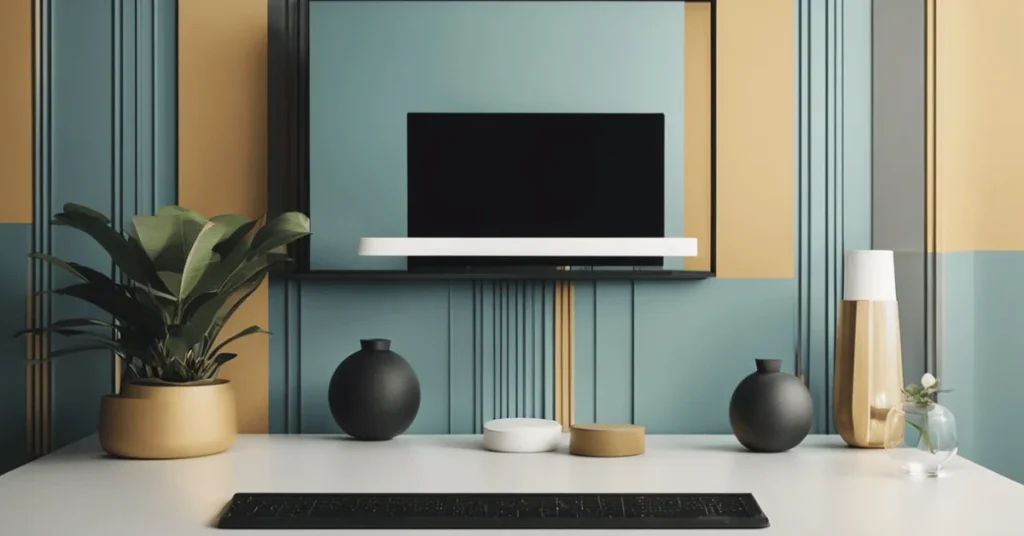
Our exploration of contemporary minimalism art reveals its significant impact on various artistic domains and its evolution through the post-minimalist movement.
Minimalist Influence on Other Art Forms
Minimalism in art has significantly shaped the landscape of modern creativity, with its influence extending beyond paintings and into sculptures, drawings, and even collage. We observe that sculptures have adopted minimalism’s simple geometric shapes, often to invoke contemplation and a focus on the intrinsic qualities of the materials used.
In the realm of drawings, minimalism prompts artists to strip down to the essence of the subject, sometimes resulting in works consisting solely of sparse lines or forms. As for paintings, minimalism has encouraged a distinctive use of color and space, with landscapes and seascapes rendered in broad washes of muted tones or bold, unadorned blocks of color. These minimalist methodologies challenge observers to engage with the artwork without the clutter of complex detail.
| Art Form | Minimalist Characteristics |
|---|---|
| Sculptures | Emphasis on material, geometric forms, spatial relationships |
| Drawings | Simplified lines and forms with reduced detail |
| Collages | Restrained composition, often monochromatic or limited in palette |
| Landscapes | Broad color application, abstracted forms |
Transitions to Post-Minimalism
Post-minimalism emerged as artists began to integrate personal narratives and broader social commentary into the minimalist paradigm. This movement maintains minimalism’s core values of simplicity and focus while incorporating more complex ideas and forms.
For instance, post-minimalist sculptures might retain minimalism’s affinity for geometric shapes but infuse them with layered meanings or interactive elements. This subsequent phase represents an amalgamation of minimalism with other styles, evidencing a seamless transition while expanding the vocabulary of artistic expression.
Our investigations confirm that contemporary minimalist art, while rooted in reduction and simplicity, has not only influenced a multitude of other art forms but has also set the foundation for new movements that continue to reinterpret its principles.
The Future of Minimalism
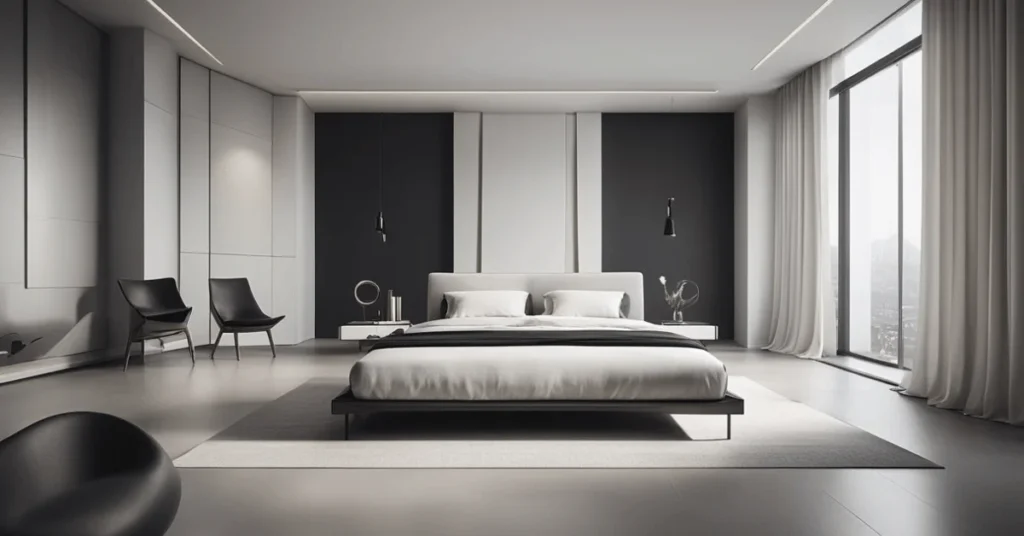
As we examine the trajectory of minimalism, it’s clear this art form is far from static. The burgeoning interests in how simplicity can offer depth in both perception and form continue to push this movement into new territory.
Evolving Trends and New Directions
Minimalist artists are embracing advancements in technology to explore the concept of reality within a minimalist framework. The exploration often involves intersecting the physical space with digital realms, creating immersive experiences where the physical and virtual interplay seamlessly. An interesting trend to observe is the use of augmented reality (AR) to overlay contemporary minimalism art onto our immediate environment, enhancing unity between the viewer, the artwork, and the space it occupies.
- Virtual Minimalism: The incorporation of VR (Virtual Reality) allowing for new modes of interaction, where users navigate through minimalist spaces.
- Eco-conscious Materials: A sway towards sustainable materials that respond to environmental realities.
- Interactive Installations: A growing preference for minimalist pieces that invite the audience to become part of the art, thereby altering their perception of space.
Minimalism Beyond the Art World
Minimalism extends its tendrils beyond the traditional art scene, influencing various aspects of design and living. We are witnessing a cross-pollination of minimalist principles into areas such as architecture, interior design, and lifestyle, reflecting a societal shift towards unification and cohesiveness.
- Architectural Design: Buildings that adhere to minimalist principles are becoming more prevalent, emphasizing open spaces and integration with nature.
- Home Décor: The minimalist aesthetic is increasingly popular in homes, promoting cleaner lines and decluttered spaces.
Table 1: Minimalism Influence
| Sector | Influence of Minimalism |
|---|---|
| Digital User Interfaces | Simplified designs, focusing on functionality |
| Fashion | Reducing complexity to highlight wearability and form |
| Lifestyle | Greater stress on living with less and mindfulness |
Through these sectors, the essence of contemporary art’s simplicity and coherence asserts a broader cultural resonance. The presence of minimalism in various facets of life reiterates its staying power and evolving significance.
Frequently Asked Questions
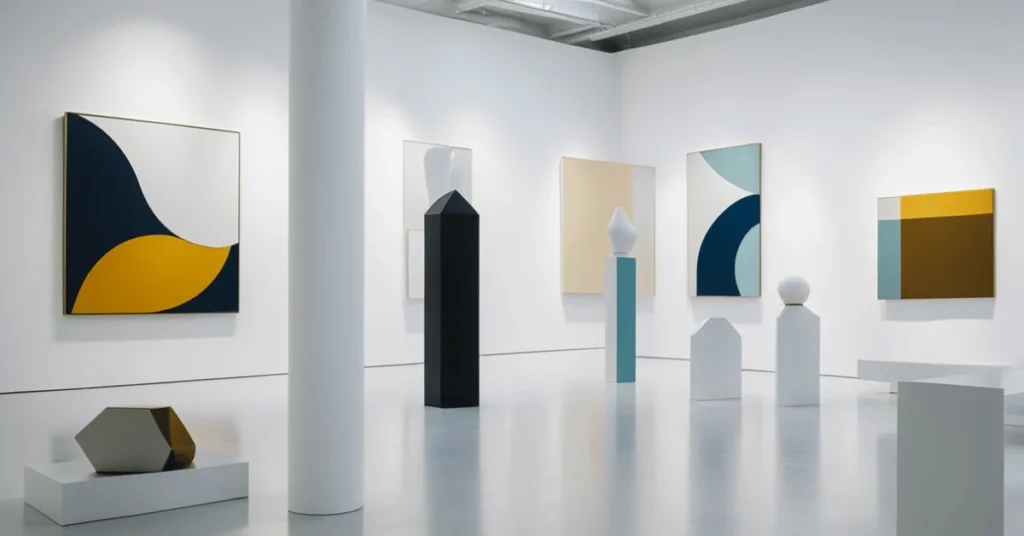
In this section, we address some of the most common inquiries regarding contemporary minimalism art, from its core attributes to its interpretation within modern spaces.
What are the defining characteristics of contemporary minimalism art?
Contemporary minimalism art is characterized by its simplicity, focusing on the use of monochromatic color palettes, geometric forms, and a reduction of elements to the essentials. This art form emphasizes purity of line and form, where content is stripped down to its most fundamental features.
How has minimalist art evolved into contemporary minimalism?
Contemporary minimalism has developed from its historical roots by embracing new materials and technologies. Artists today experiment with digital media and site-specific installations, broadening the scope of minimalism to include conceptual aspects while maintaining its signature aesthetic conciseness.
Who are some prominent artists within the contemporary minimalism art movement artists today?
Prominent artists of the contemporary minimalism art active today include Olafur Eliasson, whose work often explores light and perception, and Tadao Ando, an architect known for his minimalist buildings that interact with natural elements. Their work demonstrates the continued relevance and innovation within contemporary minimalism art.
What are the key differences between contemporary minimalism art and abstract minimalism?
Contemporary minimalism art often involves a focus on physical form and spatial relationships, whereas abstract minimalism places greater emphasis on the idea of purity and essence in art without strict adherence to geometric forms. Abstract minimalism may involve a looser interpretation of minimalist principles.
How do minimalist principles translate into interior design?
In interior design, minimalist principles translate to open, uncluttered spaces that prioritize functionality. Key features include neutral color schemes, bare walls, and the use of natural light to enhance the sense of simplicity and openness in the design.
Can you provide examples of iconic contemporary minimalism art from the 21st century?
Iconic contemporary minimalism art from the 21st century include John McCracken’s “Fair,” a polished resin and fiberglass sculpture that reflects light and space, and Donald Judd’s untitled works, which consist of precise arrangements of boxes or progressions that explore three-dimensional space. These pieces exemplify minimalist art’s enduring legacy and its evolution.
We’ve delved into the world of contemporary minimalism art, but now it’s your turn! What are your thoughts and interpretations?
Share your insights and join the conversation in the comments below.


